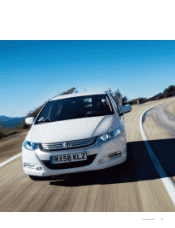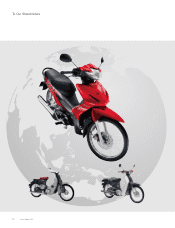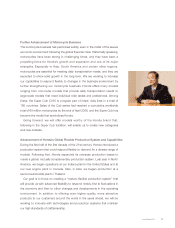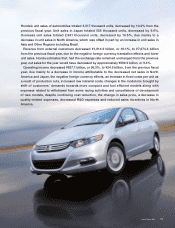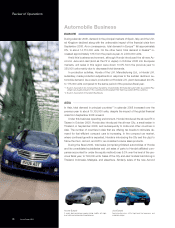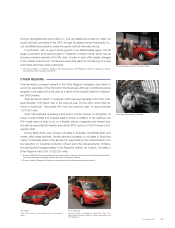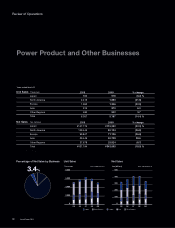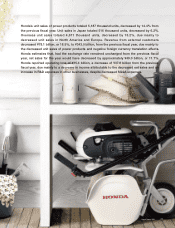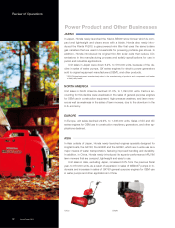Honda 2009 Annual Report Download - page 24
Download and view the complete annual report
Please find page 24 of the 2009 Honda annual report below. You can navigate through the pages in the report by either clicking on the pages listed below, or by using the keyword search tool below to find specific information within the annual report.
ASIA
Demand for motorcycles is continuing to expand in Asia, where they are an es-
sential means of transportation. In calendar 2008, despite the unfavorable impact
of declines in agricultural product prices in the second half of the year, total de-
mand*1 for motorcycles in the principal countries of Asia rose approximately 6%,
to about 37.9 million units, as a result of a strong economic performance in the
first half of the year.
By country, in India, sales were about 7.4 million units, approximately the
same as in the previous year. Unit sales were driven by a variety of factors, in-
cluding the favorable impact of lower excise duties, which contributed to expan-
sion in demand for motorcycles, and weak consumer confidence because of the
deterioration of economic conditions from the latter half of the year. In Indonesia,
sales for the year were up 33%, to about 6.5 million units, boosted by increases
in the farm household income and despite the tightening of credit criteria from the
latter half of the year onward. Sales in Thailand rose 7%, to about 1.7 million
units, supported by favorable economic growth in the first half of the year, despite
declines in agricultural product prices in the latter half.
Amid these business conditions, in Thailand, Honda launched its CZ–i 110
family-sport model which offers a highly eco-friendly performance and low fuel
consumption and the Click–i, equipped with an automatic transmission and
PGM-FI (electronic fuel injection) in July 2008. In addition, the Wave 110–i 110cc
bike equipped with a new engine was launched in January 2009. The Wave se-
ries of motorcycles are a key lineup in Asia, with annual sales of about 2.6 million
units, in seven countries, mainly in the ASEAN region. Following the introduction
in Thailand, Honda plans to introduce this Wave series lineup to the rest of the
ASEAN region. In Vietnam, Honda introduced the Wave RSX in April 2008. In In-
dia, Honda Motorcycle and Scooter India Private Limited, Honda’s wholly owned
subsidiary, introduced the CBF Stunner 125cc motorcycle in June 2008 and the
Activa scooter, powered by a new 110cc engine offering improved fuel economy
in March 2009.
CBF Stunner (India)
With an appearance and equipment that are in a higher class,
the CBF Stunner emphasizes style and drive feel.
CZ-i 110 (Thailand)
With a newly developed 110cc FI engine, the CZ-i 110 offers
an 18% improvement in fuel economy and a 25% increase in
power.
Annual Report 2009
22
Motorcycle Business
Review of Operations



